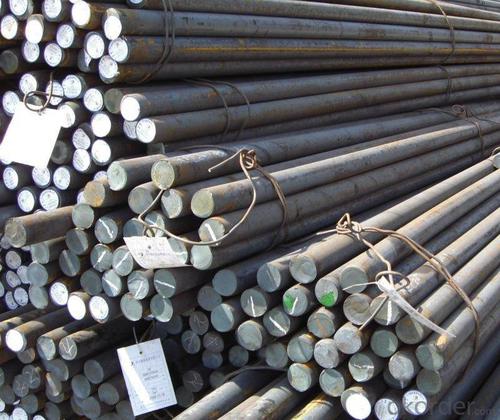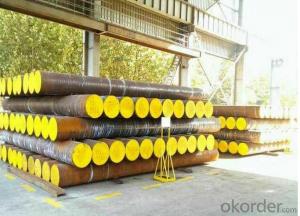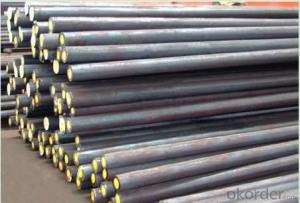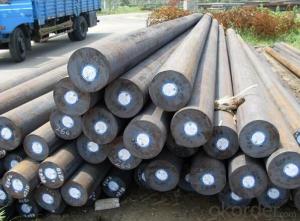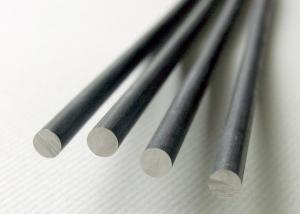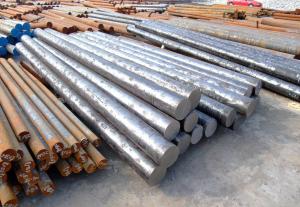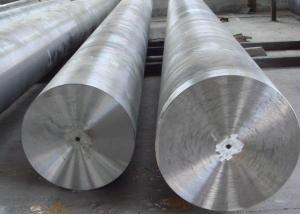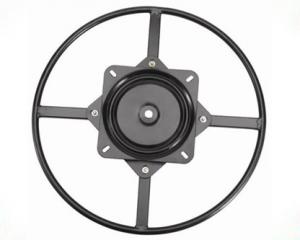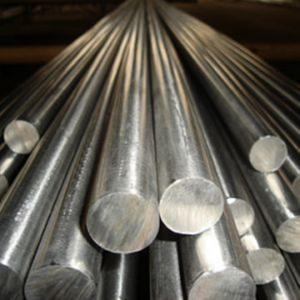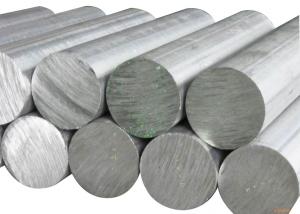20Cr Steel Round Bar SAE520 Steel Round Bar
- Loading Port:
- Tianjin
- Payment Terms:
- TT OR LC
- Min Order Qty:
- 25 m.t.
- Supply Capability:
- 50000 m.t./month
OKorder Service Pledge
OKorder Financial Service
You Might Also Like
Item specifice
20Cr Steel Round Bar SAE520 Steel Round Bar
Product Description:
1.Standard:40Cr,20Cr, 40CrMo4,SCM440,AISI4140, etc.
2.Diameter:25mm-450mm
3.Length:5.8/6m-12m or as required
4.Application:re-manufacture, structural steel etc.
5.Certificates:ISO9001:2008,ISO14001:2004,OHSAS18001
6.Packing: In bundles,Standard export sea-worthy packing or as customer's requirement
7.Shipment: by bulk or by container
8.Quality Contation
Both end of each bar must be cut.
Ladle furnanced and vacuum de-gassed
Show heat No. on each bar
Surface condition the surface of the hot rolled square bar shall befree cracks, scar and wrinkles that affect the use of the
billets. In case there is the above-mentioned defect, it shall be remove.
The mill test certificate shall show the chemical composition, and it is guaranteed that the chemical composition shall be
within the limit stipulated in the contract.
Chemical composition:
Grade | C | Si | Mn | Cr |
20Cr | 0.18-0.24 | 0.17-0.37 | 0.5-0.8 | 0.7-0.9 |
Specification:
OD | Length | Material | Standard | Technique |
16-260mm | 6-12m or aques per request | 20# | GB ASTM DIN | Hot rolled |
16-350mm | 45# | |||
200-500mm | 45# | Forged | ||
20-250mm | 20Cr,40Cr,20-42CrMo | Hot rolled | ||
50-300mm | GCr15 |
Application:
Hot rolled alloy structure steel round bar are widely used in machinery making, autombile making, railway, mine machinery, petoleum machinry, agricultural machinery and civil archtectue such as all kinds of shafts, screws, connecting rods, hardware tools, gears, standard parts, spanners fasteners, structural parts for automobile and agricultural machinery, outer and iner sleeves, rollers and balls for bearing making.
Product Show:
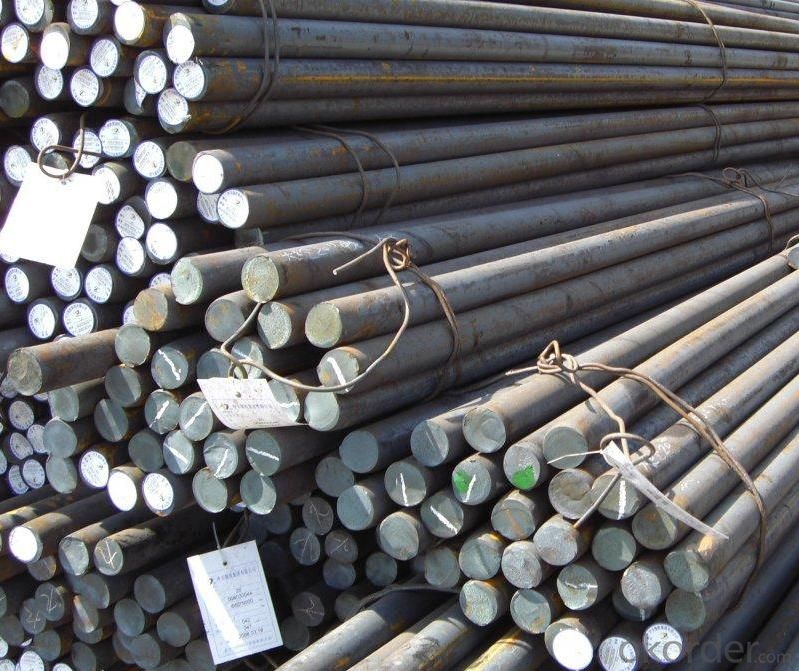
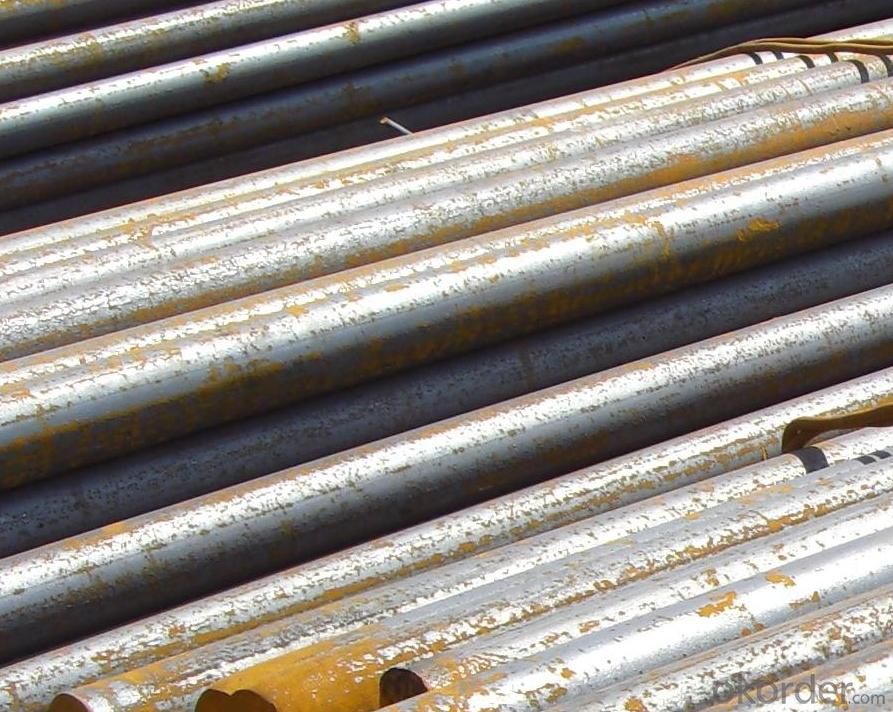
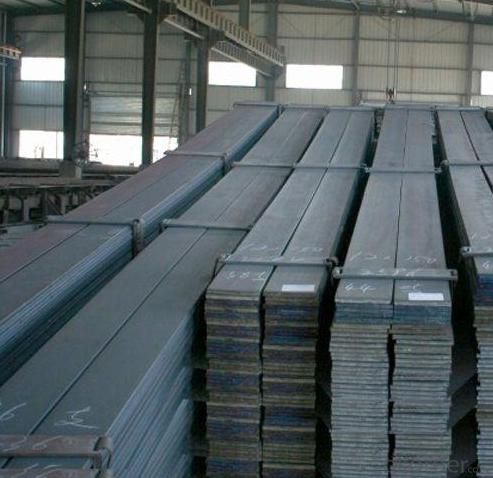
- Q:How does special steel contribute to the automotive fuel efficiency?
- Special steel contributes to automotive fuel efficiency in several ways. Firstly, special steel is lighter and stronger than traditional steel, allowing for the use of thinner and lighter components in the vehicle's structure. This reduces the overall weight of the vehicle, which in turn reduces the amount of fuel needed to propel it. Additionally, special steel can be used to create more aerodynamic designs, reducing air resistance and improving the vehicle's fuel efficiency. Furthermore, special steel can be used in the manufacturing of high-efficiency engines, improving their performance and reducing fuel consumption. Overall, the use of special steel in the automotive industry helps to create lighter, more aerodynamic, and more fuel-efficient vehicles.
- Q:What are the different surface cleaning methods used for special steel?
- There are several surface cleaning methods that can be used for special steel, depending on the specific requirements and the level of cleanliness desired. Some of the commonly used methods include: 1. Mechanical Cleaning: This method involves the use of abrasive materials or tools to physically remove dirt, rust, and other contaminants from the surface of the steel. It can be done through processes such as sanding, wire brushing, or abrasive blasting. 2. Chemical Cleaning: Chemical cleaning involves the use of chemical agents to dissolve or loosen dirt, grease, oil, or rust from the surface of the steel. Different types of chemicals can be used depending on the type and severity of the contaminants. Acid pickling is one such method that involves immersing the steel in an acid solution to remove scale and rust. 3. High-pressure Water Cleaning: This method utilizes the force of high-pressure water jets to remove dirt, grease, and other contaminants from the surface of the steel. It is effective in removing loose particles and can be used as a pre-cleaning step before other surface preparation methods. 4. Ultrasonic Cleaning: Ultrasonic cleaning is a non-abrasive method that uses high-frequency sound waves to create microscopic bubbles in a cleaning solution. These bubbles implode upon contact with the surface of the steel, effectively removing contaminants from hard-to-reach areas. 5. Electrochemical Cleaning: This method involves passing an electric current through a cleaning solution or electrolyte to facilitate the removal of contaminants from the steel surface. It is useful in removing rust and restoring the steel's appearance. 6. Thermal Cleaning: Thermal cleaning methods, such as flame cleaning or heat treatment, involve subjecting the steel to high temperatures to burn off organic contaminants or to induce controlled oxidation and subsequent removal of scale, rust, or other surface impurities. It is important to note that the choice of surface cleaning method depends on various factors, including the type of contaminants, the condition of the steel, the desired level of cleanliness, and the overall application requirements. A combination of different methods may be used to achieve the best results.
- Q:How does special steel perform in chemical processing applications?
- Special steel is highly desirable in chemical processing applications due to its excellent corrosion resistance, high temperature resistance, and strength. These properties allow it to withstand harsh chemical environments and maintain its structural integrity, ensuring safe and efficient operation. Additionally, special steel can exhibit exceptional resistance to pitting, crevice corrosion, and stress corrosion cracking, making it an ideal choice for various chemical processing equipment such as reactors, storage tanks, and pipelines.
- Q:Can special steel be used in the textile industry?
- Yes, special steel can be used in the textile industry. Special steel alloys, such as stainless steel, can be used for textile machinery components like needles, pins, and various parts of looms. These steel alloys provide excellent strength, corrosion resistance, and durability, making them suitable for demanding textile manufacturing processes.
- Q:How does special steel contribute to the wear resistance of products?
- The wear resistance of products is enhanced by special steel in various ways. Firstly, special steel possesses high strength and hardness, enabling it to withstand heavy loads and resist deformation. This characteristic is particularly vital in applications where products are exposed to abrasive forces or repetitive stress, such as in machinery parts or cutting tools. Furthermore, special steel often includes specific alloying elements that augment its wear resistance. For instance, the introduction of chromium can create a protective layer of chromium oxide on the steel's surface, acting as a barrier against corrosion and wear. Similarly, the incorporation of vanadium or molybdenum can heighten the steel's hardness and toughness, rendering it more resilient to wear and fatigue. Additionally, heat treatment can be employed to further enhance the wear resistance of special steel. Techniques like quenching and tempering can modify the steel's microstructure, resulting in a fine-grained and uniform composition. Consequently, this leads to improved hardness, increased resistance to wear, and enhanced dimensional stability. In conclusion, special steel contributes to the wear resistance of products due to its inherent strength and hardness, the presence of alloying elements that enhance wear resistance, and its capacity to undergo heat treatment for improved properties. These characteristics make special steel an exceptional choice for applications where durability and longevity are of utmost importance.
- Q:What are the different surface finishes available for special steel?
- There are several different surface finishes available for special steel, such as polished, brushed, satin, mirror, etched, blasted, and coated finishes. These finishes are used to enhance the appearance, durability, and corrosion resistance of the steel, depending on the specific application and desired outcome.
- Q:How is wear-resistant alloy steel used in the production of mining equipment?
- Wear-resistant alloy steel is extensively used in the production of mining equipment to enhance durability and strength. It is used to manufacture various components like buckets, blades, drill bits, and crusher liners that are subjected to abrasive materials and harsh mining conditions. The use of wear-resistant alloy steel ensures that these equipment parts can withstand the high impact and abrasion encountered during mining operations, thereby increasing their longevity and reducing maintenance costs.
- Q:Can special steel be used in the jewelry industry?
- Yes, special steel can be used in the jewelry industry. It is commonly used to make durable and versatile jewelry pieces, especially in the production of contemporary and industrial style jewelry. Special steel offers unique design options and can be combined with other materials to create stunning and long-lasting jewelry pieces.
- Q:How is electrical steel used in the production of transformers and motors?
- Electrical steel is primarily used in the production of transformers and motors due to its unique magnetic properties. It is a type of steel that has been specifically designed to have high magnetic permeability, low core losses, and reduced eddy current losses. These properties make electrical steel an ideal material for constructing the cores of transformers and motors. The laminated structure of electrical steel helps to minimize energy losses by reducing the impact of eddy currents. Overall, electrical steel plays a crucial role in enhancing the efficiency and performance of transformers and motors by optimizing the magnetic circuit and reducing energy losses.
- Q:What are the safety considerations when working with special steel?
- When working with special steel, there are several safety considerations that need to be taken into account. Firstly, special steel can have high heat resistance, so it is important to use appropriate personal protective equipment (PPE) such as heat-resistant gloves, face shields, and fire-resistant clothing to prevent burns or other heat-related injuries. Secondly, special steel can be heavy and may require the use of lifting equipment or proper lifting techniques to prevent strains or muscle injuries. Additionally, special steel may contain elements or chemicals that could be hazardous if inhaled or ingested, so proper ventilation and respiratory protection should be used. Lastly, the use of sharp tools or equipment is often necessary when working with special steel, so it is crucial to follow safe handling practices and use proper tool guards to prevent cuts or punctures. Overall, awareness of these safety considerations and adherence to safety protocols is essential to ensure a safe working environment when dealing with special steel.
1. Manufacturer Overview |
|
|---|---|
| Location | |
| Year Established | |
| Annual Output Value | |
| Main Markets | |
| Company Certifications | |
2. Manufacturer Certificates |
|
|---|---|
| a) Certification Name | |
| Range | |
| Reference | |
| Validity Period | |
3. Manufacturer Capability |
|
|---|---|
| a)Trade Capacity | |
| Nearest Port | |
| Export Percentage | |
| No.of Employees in Trade Department | |
| Language Spoken: | |
| b)Factory Information | |
| Factory Size: | |
| No. of Production Lines | |
| Contract Manufacturing | |
| Product Price Range | |
Send your message to us
20Cr Steel Round Bar SAE520 Steel Round Bar
- Loading Port:
- Tianjin
- Payment Terms:
- TT OR LC
- Min Order Qty:
- 25 m.t.
- Supply Capability:
- 50000 m.t./month
OKorder Service Pledge
OKorder Financial Service
Similar products
New products
Hot products
Hot Searches
Related keywords


